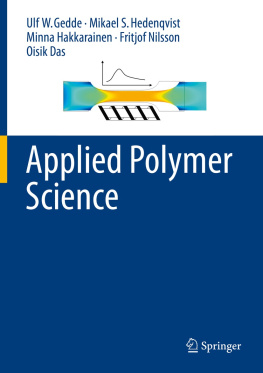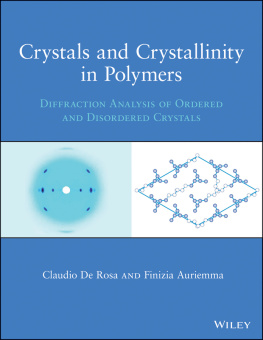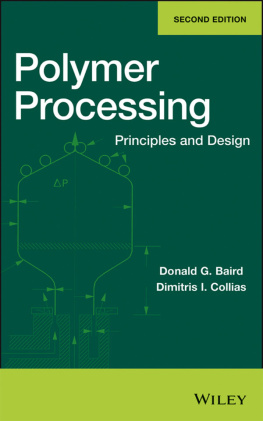Copyright 2012 John Wiley & Sons, Inc. All rights reserved.
Published by John Wiley & Sons, Inc., Hoboken, New Jersey
Published simultaneously in Canada
No part of this publication may be reproduced, stored in a retrieval system, or transmitted in any form or by any means, electronic, mechanical, photocopying, recording, scanning, or otherwise, except as permitted under Section 107 or 108 of the 1976 United States Copyright Act, without either the prior written permission of the Publisher, or authorization through payment of the appropriate per-copy fee to the Copyright Clearance Center, Inc., 222 Rosewood Drive, Danvers, MA 01923, (978) 750-8400, fax (978) 750-4470, or on the web at www.copyright.com . Requests to the Publisher for permission should be addressed to the Permissions Department, John Wiley & Sons, Inc., 111 River Street, Hoboken, NJ 07030, (201) 748-6011, fax (201) 748-6008, or online at http://www.wiley.com/go/permission .
Limit of Liability/Disclaimer of Warranty: While the publisher and author have used their best efforts in preparing this book, they make no representations or warranties with respect to the accuracy or completeness of the contents of this book and specifically disclaim any implied warranties of merchantability or fitness for a particular purpose. No warranty may be created or extended by sales representatives or written sales materials. The advice and strategies contained herein may not be suitable for your situation. You should consult with a professional where appropriate. Neither the publisher nor author shall be liable for any loss of profit or any other commercial damages, including but not limited to special, incidental, consequential, or other damages.
For general information on our other products and services or for technical support, please contact our Customer Care Department within the United States at (800) 762-2974, outside the United States at (317) 572-3993 or fax (317) 572-4002.
Wiley also publishes its books in a variety of electronic formats. Some content that appears in print may not be available in electronic formats. For more information about Wiley products, visit our web site at www.wiley.com .
Library of Congress Cataloging-in-Publication Data:
Brazel, Christopher S., 1970
Fundamental principles of polymeric materials / Christopher S. Brazel, Stephen L. Rosen. 3rd ed.
pages cm
Revised edition of: Fundamental principles of polymeric materials / Stephen L. Rosen. 2nd ed. c1993.
Includes bibliographical references and index.
ISBN 978-0-470-50542-7
1. Polymers. I. Rosen, Stephen L., 1937- II. Rosen, Stephen L., 1937- Fundamental
principles of polymeric materials. III. Title.
TA455.P58R63 2012
668.9dc23
2011052328
Preface
This work has been edited and organized to provide a solid understanding of the main concepts of polymeric materials at an introductory level, suitable for undergraduate and beginning graduate students in disciplines ranging from chemistry and chemical engineering to materials science, polymer engineering, and mechanical engineering. The second edition of the textbook was organized in a way that flowed naturally from molecular-level considerations to bulk properties, mechanical behavior, and processing methods. I have kept that organization intact with this third edition. I have used this book in teaching a polymer materials engineering course over the past several years, and find that enough information is presented without overwhelming students in detail (i.e., for more detailed courses beyond the introductory polymer class).
One of the big challenges in updating a textbook is to include some of the newer materials, methods, and issues surrounding polymer science while editing and refining the original material so that the end product remains fairly streamlined and provides a balance between describing theories and methodologies while treating each subject with an appropriate weighting. (Of course, instructors are certainly invited to pick and choose topics for their classes, and add material to that covered in the text, but I hope that this provides a good, solid read for students learning the material for the first time without a significant need to supplement the book on the instructor's behalf and without providing so much information that significant portions of the book must be passed over in a one-semester course.)
The text should be suitable for advanced undergraduates and beginning graduate students in disciplines ranging from chemical engineering and chemistry to materials science and mechanical engineering. I have taught mixed classes with just this background using the second edition, and usually found that some introductory information (such as organic chemical structures) was neededboth for students who had not been formally trained in organic chemistry and for those who needed a refresher. This edition now includes a short section in Chapters 1 and 02 on organic functional groups, with an emphasis on some of the structures found in condensation polymerizations. Several instances of natural polymers are included in structures and examples, including starches and polypeptides, to make the important connection that may building blocks of biology are also polymers.
Some reorganization and combination was done in the third edition, with Chapters 3 and 04 from the previous edition combined, and some of the detailed information on polymer rheology and transport was shortened so that students could be introduced to the material without being overwhelmed. Only small sections were removed, and at many instances, new materials were added, such as the addition of techniques for polymer analysis, processing techniques (including three-dimensional prototyping), and the inclusion of microencapsulation with the coatings section. Updates to advanced polymerization techniques includes some of the emerging techniques to make well-defined polymers, such as atom-transfer radical polymerization, although these methods are treated in a rather brief sense, so that students can understand the basics of the technique improvements and what advantages are achieved compared to other techniques. (In most cases, references are given for those seeking more detail.)
Some of the things that I liked best about this book for teaching an introductory polymers course have been retained. These areas include the description of processes to formulate different products, along with sketches of the processes, the arrangement of the book in going from molecular to macromolecular to physical structures, and the general tone of the book that attempts to connect with the reader through examples that may be familiar to them.
New homework problems have been introduced throughout, primarily those that I have found useful in teaching.
Christopher S. Brazel
Tuscaloosa, AL
August 2011
Preface to the Second Edition
This work was written to provide an appreciation of those fundamental principles of polymer science and engineering that are currently of practical relevance. I hope the reader will obtain both a broad, unified introduction to the subject matter that will be of immediate practical value and a foundation for more advanced study.
A decade has passed since the publication of the first Wiley edition of this book. New developments in the polymer area during that decade justify an update. Having used the book in class during the period, I've thought of better ways of explaining some of the material, and these have been incorporated in this edition.
But the biggest change with this edition is the addition of end-of-chapter problems at the suggestion of some academic colleagues. This should make the book more suitable as an academic text. Most of these problems are old homework problems or exam questions. I don't know what I'm going to do for new exam questions, but I'll think of something. Any suggestions for additional problems will be gratefully accepted.








